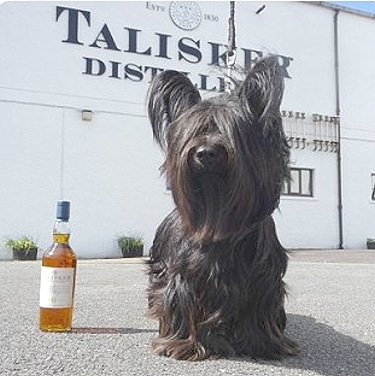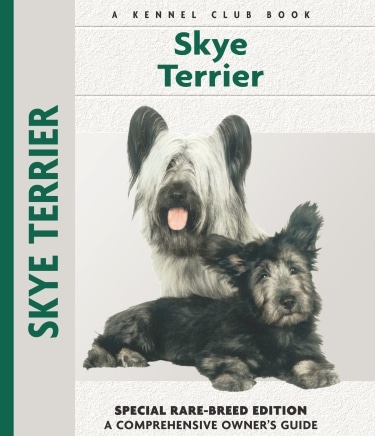
The Skye Terrier is small, low set, sturdy and muscular with a long and flowing coat. He is elegant, agile, friendly, happy and loyal. The Skye Terrier traces its roots back to the Isle of Skye, the most northern island off the west coast of Scotland. While its exact origins are not known, it appears the most popular theory involves a Spanish shipwreck off the coast of the Isle of Sky in the early 1600s. Survivors of the ill fated ship included Maltese dogs, which are claimed to have been mated with local Terriers, thus producing the Skye Terrier.
The Skye Terrier was primarily used to hunt fox, otter and badgers. This breed is fearless, bold, courageous and has great stamina. Skye Terriers also have a keen sense of smell and excel at seeking and digging out vermin or small game from their burrow.
Queen Victoria helped the Skye Terrier gain popularity as she was quite a fan of this unique breed. In addition, Skye Terriers were depicted in the famous artist Sir Edwin Landseer’s paintings which added interest and popularity of these good natured dogs.
The Skye Terrier was recognized by the American Kennel Club in the Terrier Group in 1887. While they were once very popular, the Skye Terrier population has been on the decline and is now considered a rare breed.
Height: The typical height for a Skye Terrier is about 10 inches (25 cm) at withers. The Skye Terrier’s length is twice as long as his height.
Weight: The weight of Skye Terrier ranges from 35 to 45 pounds (16 – 21 kg). AKC Standard.
Coat Type: The Skye Terrier has a long, flowing, profuse and protective double coat. The outer coat has a harsh texture and is straight. The under coat is shorter, soft and woolly. To keep the Skye Terrier’s coat in good condition and free from matting, it is essential to keep it brushed and clean.
Color: According to the AKC Standard, part of their description of the Skye Terrier’s coat color includes…”must be of one over-all color at the skin but may be of varying shades of the same color in the full coat, which may be black, blue, dark or light grey, silver platinum, fawn or cream”.
Temperament: The Skye Terrier is very loyal, happy, affectionate and good natured. He is alert, protective, wary of strangers and is considered a good watch dog. The Skye Terrier is forever faithful to his master and very friendly with those he knows. This breed is the type that needs to size up a person first before becoming friendly and / or attached. One should never force a relationship with a Skye Terrier as he will come around on his own. The Skye Terrier must have an owner who is dominant, otherwise, this type of dog will try to rule the home which would only cause behavior problems. Skye Terriers are fine with children they are accustomed to and who do not tease. Proper and early socialization is very important. Daily walks, run and play are all considered good exercise for a Skye Terrier. Note: Care must be taken when exercising a Skye Terrier puppy as too much stress on his growing bones may cause injury. Strenuous exercise and play should be avoided until the puppy is 10 months and older.
Health Concerns: The Skye Terrier is generally a healthy breed, although they can be affected by any of the conditions: degenerative disc disease, hemangiosarcomas, autoimmune disease, hyperthyroidism and mammary cancer. Because the Skye Terrier is very short legged, he is more prone to injuries to his growing bones if exercised too much while before 10 months of age. The average life expectancy for a Skye Terrier is between 12 – 15 years.
Special Interest:
• There are two different varieties of the Skye Terrier – the drop ear and the prick ear.
Classifications:
AKC: Terrier Group
ANKC: Terriers Group 2
CKC: Terrier Group 4
FCI: Group 3 Section 2 Small sized Terriers
KC: Terrier
NZKC: Terrier
UKC: Terriers
Kennel.com Recommends SKYE TERRIER – RARE BREED EDITION
SKYE TERRIER – RARE BREED EDITION
 Kennel.com – Complete Guide to Dogs The Dog Lovers Guide
Kennel.com – Complete Guide to Dogs The Dog Lovers Guide